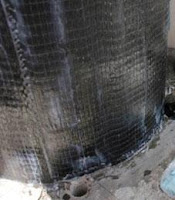Development of fiber reinforced concrete in recent time brings a prospect to both new concrete structure and to provide repair/retrofitting efforts to existing structure to strengthen structure against earthquake or wind loads or for changing occupancy criteria or to survive increased structural load due to further extension of structure in both horizontal or vertical directions. ASTM C 1116/c 1116M provides some specifications for fiber-reinforced concrete. In this post we will discuss about the factors effecting performance of fiber-reinforced concrete.
In this specification fibers are classified in four types. These are:
1. Type I steel fiber reinforced concrete
2. Type II Glass fiber reinforced concrete
3. Type III Synthetic fiber reinforced concrete
4. Type IV Natural fiber reinforced concrete
Now we will learn the factors that influence the performance of fiber reinforced concrete. These are:
1. Susceptibility to physical damage of fiber during mixing fibers or shotcreting.
2. We know that the solution of cement paste is highly alkaline. The performance also depends on susceptibility to damage of fiber due to chemical action of alkaline solution on fibers.
 3. The paste also sometimes contains chlorides, carbon dioxide, oxygen or sulfate. A fiber susceptible to these agents can also hamper the performance.
3. The paste also sometimes contains chlorides, carbon dioxide, oxygen or sulfate. A fiber susceptible to these agents can also hamper the performance.
4. Some fibers, during mixing, forms ball that hamper the performance. It should make clear that this mixing is not proper mixing. So the phrase improper mixing should be used. Proper method of mixing should be chosen for particular fibers.
5. At last the degree of improvements of mechanical performance of these concrete/shotcrete in regards to fibers also depends on material used as fibers, design and geometry of applied fiber in concreting process.

No comments:
Post a Comment